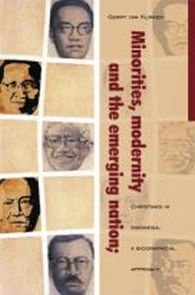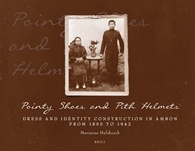Minorities, modernity and the emerging nation: Christians in Indonesia, a biographical approach
Description
This book examines the development of Indonesian nationalism from the viewpoint of a minority: the urban Christian elite. Placed between the Indonesian nationalist promise of freedom and the (equally Christian) Dutch colonial promise of modernity, their experience of late colonialism was filled with dilemma and ambiguity. Rather than describe dry institutions, this study traces the lives of five politically active Indonesian Christians, both Catholic and Protestant, spanning the late colonial, Japanese occupation and early independence periods: Amir Sjarifoeddin, Bishop Soegijapranata, Kasimo, Moelia and Ratu Langie. For most of them the main problem was not so much the protest against colonialism, but the transition to more modern forms of political community. Their status as a religious minority, and as urban middle class ‘migrants’ out of their traditional communities, made them more aware that achieving moral consensus was problematic. This book should be of interest to students of Indonesian history, as well as those studying the history of Third World nationalism and the history of Christian missions. Gerry van Klinken taught science at universities in Malaysia and Indonesia between 1979 and 1991. Since then he has taught and conducted research at a number of Australian universities. At present he is a researcher at KITLV. What the reviewers say: “This is the best work I have read on Indonesian colonial politics as seen through the eyes of ethnic and/ or religious minorities… It is the kind of carefully contextualised intellectual history that needs to be written on Indonesia.” (Prof. John Ingleson, University of New South Wales) “I have enjoyed reading this thesis more than any for some time. It is both extremely well researched and exceptionally well written. It revisits the Indonesian nationalist movement, which had seemed in danger of being rendered stale and stereotypical by the black/ white categories of nationalist historiography, and brings it back to life in a biographical approach full of ambivalence and inner tension.” (Prof. Anthony Reid, Australian National University)
Additional Information
| Edition | |
|---|---|
| Pages | |
| Series | |
| authors | 261 |







